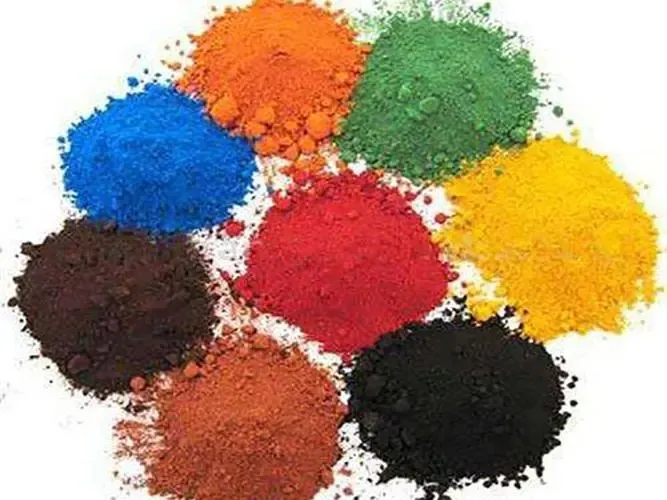تحسين معدل تدفق الصقيل في إنتاج السيراميك باستخدام ثلاثي فوسفات الصوديوم
فهم تحدي اللب الصقيل
في تطور تكنولوجيا إنتاج السيراميك، يعد استقرار معدل تدفق التزجيج عاملًا حاسمًا. وغالبًا ما يواجه المنتجون تحديات في التدفق غير المتساوي للتزجيج، خاصةً في التزجيج الخام، والذي يمكن أن يصبح غير مستقر بمرور الوقت ويشبه أزهار التوفو. ويعيق عدم الاستقرار هذا كفاءة الإنتاج وجودة منتجات السيراميك.
التأثير السحري لتريبوليفوسفيت الصوديوم
يُعد ترايبوليفوسفات الصوديوم (STPP) مادة مضافة قوية معروفة بخصائصها القوية في تقليل الماء وتشتيته. وهو يلعب دورًا حاسمًا في إنتاج السيراميك من خلال تخفيف لب الصقيل وتعزيز سيولة الملاط في ظروف الرطوبة المنخفضة. وهذا يضمن بقاء ملاط التزجيج مستقرًا ولا يتدهور بسهولة، وبالتالي تحسين الجودة الإجمالية لتزجيج السيراميك.
التحقق التجريبي واختيار المواد المضافة
وقد أظهرت التجارب المكثفة أن إضافة STPP إلى ملاط التزجيج يحافظ على ثباته ومعدل تدفقه المتسق بمرور الوقت. ومع ذلك، يجب أن يكون اختيار وجرعة STPP مصممة خصيصًا لأنواع مختلفة من الطلاء الزجاجي من خلال التجريب. ويساعد ذلك على تحقيق التوازن الأمثل بين نسبة STPP والسيولة المرغوبة للطلاء الزجاجي.
تعزيز كثافة التزجيج وتقليل التلف
لا يؤدي الاستخدام المناسب لـ STPP إلى زيادة كثافة التزجيج فحسب، بل يقلل أيضًا من الأضرار التي تلحق بالسطح المزجج. وهذا يجعل التزجيج أكثر ملاءمة لمختلف تقنيات إنتاج السيراميك، بما في ذلك الرمي. وقد أظهر STPP نتائج مذهلة بشكل خاص في إنتاج الطوب العتيق، مما يعزز جودته ومتانته.
الحلول التكنولوجية لمشاكل التزجيج
ومن خلال دمج التكنولوجيا الحديثة، يقدم STPP حلاً عمليًا للمشكلة طويلة الأمد المتمثلة في التدفق غير المستقر للتزجيج في إنتاج السيراميك. يفتح تطبيقه إمكانيات جديدة لتحسين عمليات إنتاج السيراميك ويدعم تطوير صناعة السيراميك من خلال توفير مادة مضافة موثوقة وفعالة.
الختام
يُعد ترايبوليفوسفات الصوديوم مادة مضافة لا غنى عنها في إنتاج السيراميك، حيث يقدم فوائد كبيرة في تثبيت معدل تدفق التزجيج، وتعزيز كثافة التزجيج، وتقليل التلف السطحي. من خلال فهم آليته وإجراء تجارب شاملة، يمكن لمنتجي السيراميك تحسين عملياتهم وتحسين جودة المنتج ومعالجة تحديات الإنتاج القائمة منذ فترة طويلة. وهذا التقدم لا يحل المشكلات القائمة فحسب، بل يمهد الطريق لمزيد من الابتكارات في صناعة السيراميك.
الأسئلة المتداولة (FAQ)
- ما هو الصوديوم ترايبوليفوسفيت (STPP)?
- ثلاثي فوسفات الصوديوم ثلاثي الفوسفات (STPP) هو عامل مختزل للماء ومشتت يستخدم في العديد من التطبيقات الصناعية، بما في ذلك إنتاج السيراميك.
- كيف يفيد برنامج STPP إنتاج السيراميك؟
- يعمل STPP على استقرار معدل تدفق التزجيج، ويعزز كثافة التزجيج، ويقلل من تلف السطح، مما يحسن من جودة المنتج بشكل عام.
- ما هي التحديات التي يعالجها برنامج STPP في إنتاج السيراميك؟
- تعالج STPP مشكلة التدفق غير المتساوي وغير المستقر للتزجيج، والتي يمكن أن تعيق كفاءة الإنتاج وجودة المنتج.
- كيف يتم تطبيق STPP في إنتاج السيراميك؟
- تتم إضافة STPP إلى ملاط التزجيج بنسب مضبوطة، يتم تحديدها من خلال التجريب لتحقيق السيولة والاستقرار المطلوبين.
- ما هي الآثار البيئية لاستخدام STPP؟
- مادة STPP هي مادة مضافة صناعية مستخدمة على نطاق واسع مع ملف سلامة موثق جيدًا. ويكون تأثيره البيئي ضئيلًا عند استخدامه وفقًا لمعايير الصناعة.
- هل يمكن استخدام STPP في تقنيات إنتاج السيراميك الأخرى؟
- نعم، إن STPP متعدد الاستخدامات ويمكن استخدامه في مختلف تقنيات إنتاج السيراميك، بما في ذلك الرمي وإنتاج الطوب العتيق.
- ما هي الجرعة المثلى من STPP في ملاط التزجيج؟
- تختلف الجرعة المثلى من STPP باختلاف نوع التزجيج ويجب تحديدها من خلال التجربة لتحقيق التوازن بين التناسب والسيولة.
- كيف يعمل برنامج STPP على تحسين جودة الطوب العتيق؟
- تعمل STPP على تعزيز كثافة ومتانة التزجيج على الطوب العتيق، مما يجعلها أكثر مرونة وجمالاً.
- هل STPP آمن للاستخدام في إنتاج السيراميك؟
- نعم، يعتبر STPP آمنًا للاستخدام في إنتاج السيراميك عند استخدامه وفقًا لإرشادات ومعايير الصناعة.
- أين يمكنني معرفة المزيد عن استخدام STPP في السيراميك؟
- لمزيد من المعلومات، يمكنك الرجوع إلى منشورات الصناعة والدراسات البحثية واستشارات الخبراء حول إنتاج السيراميك والمواد المضافة.

